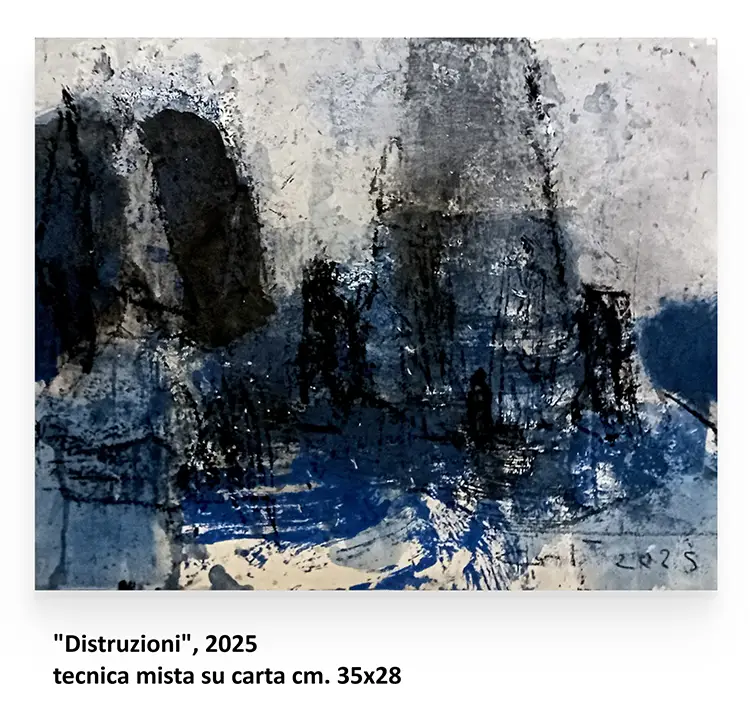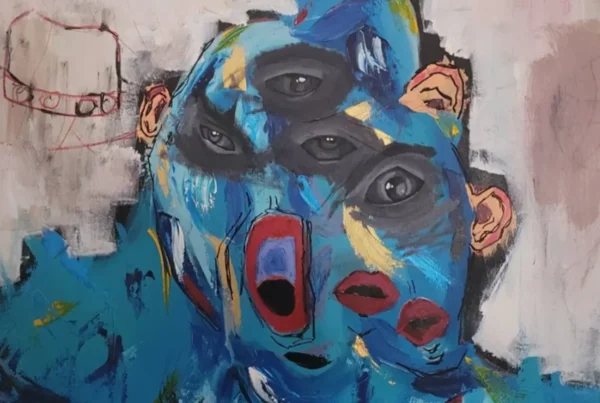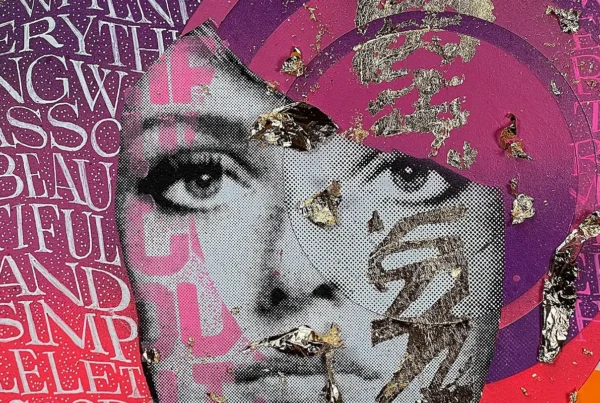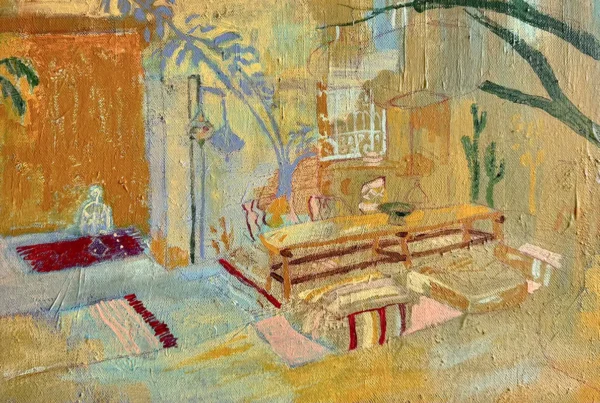“I have been developing my own pictorial alphabet made up of recurring formal models to which I assign existential and spiritual meanings.”
Gestures of Memory, Forms of Erosion
Emerging from the quiet landscapes of Rovigo in northern Italy, Vanni Cantà has carved a singular path through contemporary abstraction by imbuing his work with both restraint and rawness. Born in 1955 and active in artistic circles since the age of seventeen, Cantà’s long-standing engagement with visual expression has evolved alongside deep academic inquiry. With a degree from the University of Bologna’s DAMS program, where he focused on art history and criticism, he brings to his practice a considered awareness of the cultural lineage from which his work departs. However, despite his immersion in twentieth-century traditions, Cantà’s work rejects nostalgia. Instead, it searches for new forms of articulation through gestural abstraction and subdued materiality.
His early years were marked by figurative exploration, but abstraction eventually became his language of choice. This evolution was not a rejection of form, but a reconfiguration of how meaning might be transmitted beyond the literal. Drawing from abstract expressionism and Art Informel, Cantà developed a personal vocabulary anchored in the physical act of painting. The brushstroke, the erasure, the layering—all became elements of a syntax that speaks of transformation and transience. His continued engagement with both public and private exhibition spaces reflects an ongoing dialogue not only with audiences, but with the cultural and poetic life of his region, which remains central to his sensibility.
Though his influences span the currents of modern and contemporary art, Cantà’s focus remains on the enduring relevance of painting itself. His work resists spectacle and instead moves toward quiet insistence, a kind of meditative perseverance. The limited chromatic fields, the recurring motifs, and the atmospheric ambiguity all point toward a practice rooted in existential inquiry rather than visual decoration. Through this commitment, Cantà extends the legacy of twentieth-century abstraction while forging a deeply personal approach that continues to evolve without severing its connection to history.
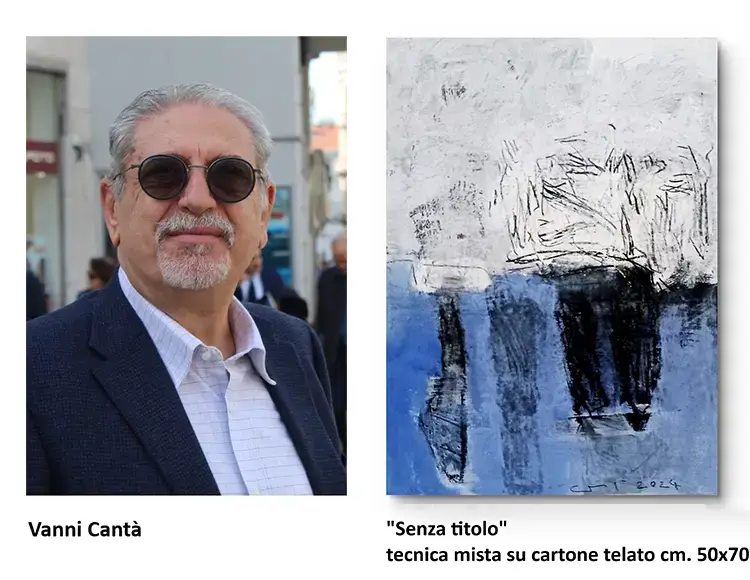
Vanni Cantà: Lines that Haunt, Shapes that Withhold
The defining feature of Vanni Cantà’s visual language is the line—not as a boundary or outline, but as an agent of ambiguity. His use of graphic marks functions like a visual murmuring, a language whose grammar is incomplete but suggestive. Often these lines trace partial forms or disappear into blurred pigment, leaving the viewer uncertain whether they are glimpsing ruins of the human figure, fragments of plant life, or psychic landscapes rendered without horizon. Cantà’s paintings are rarely entirely abstract; instead, they reside in a liminal space where shape and gesture offer fleeting recognizability without resolution.
His materials are deliberately elemental. Acrylics, watercolors, and pastels dominate his palette, often applied to paper or canvas in ways that emphasize touch over precision. The surfaces of his works are active fields, worked and reworked until meaning is partially buried beneath smudges, scratches, or soft veils of color. This persistent rearticulation results in images that feel unfinished by design, suggesting an ongoing process rather than a fixed statement. Cantà describes this as a dialectical tension between construction and destruction—a visual strategy that embraces incompletion as a source of expressive power.
This approach reaches a particularly vivid expression in works such as Altrove (2024) and Attraverso (2023), where silhouette-like forms emerge as if from beneath layers of dust or ash. These pieces resist interpretation in the conventional sense; instead, they evoke spaces of psychological excavation. The viewer is invited not to interpret, but to inhabit the questions posed by these half-formed presences. In this way, Cantà’s aesthetic becomes not only formal but philosophical, offering paintings as spaces where internal and external landscapes collapse into each other, fragile and unresolved.
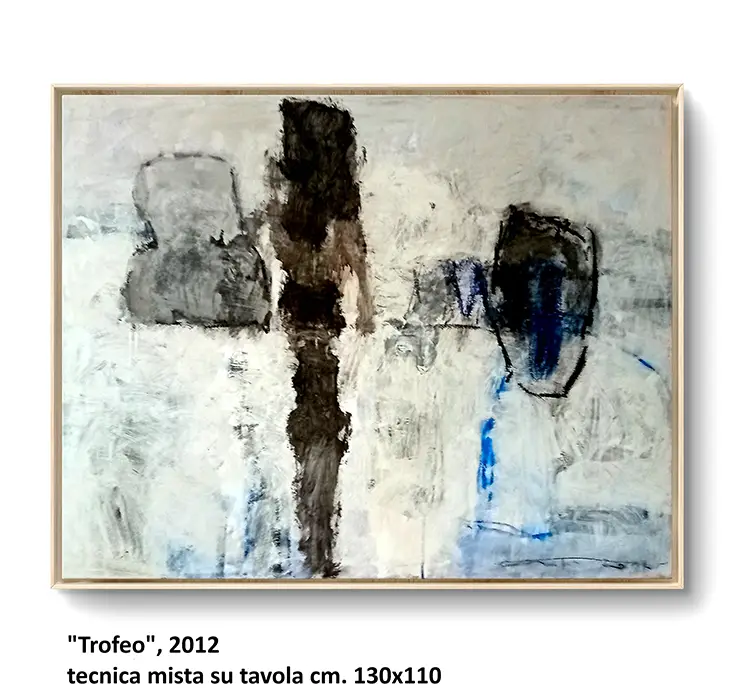
A Language of Absence and Repetition
At the core of Cantà’s artistic process lies a persistent fascination with repetition and rhythm, though never in a mechanical sense. His serial works, particularly Sette passi (2006), illustrate this preoccupation with temporal unfolding. Here, each panel functions like a stanza in a visual poem: not identical, yet bound together through recurring gestures and tonal continuity. These sequences embody a breath-like cadence, where every mark seems to hesitate between memory and intention. The act of painting becomes a kind of ritual, where meaning accumulates through recurrence rather than declaration.
His chromatic decisions are equally intentional. The subdued tones—leaden greys, deep umbers, chalk whites, and nocturnal blues—create atmospheres that are neither fully material nor entirely spiritual. They suggest spaces in between, filled with waiting or echoes. More recently, in works like Caduta (2025) and Sudari (2025), Cantà has introduced a more pronounced cobalt blue into his palette. Even so, the vibrancy of this hue is never left unguarded. It is scraped, obscured, or layered with darker pigment, preventing it from dominating. In Il respiro del drago (2025), a bloom of crimson breaks through the otherwise restrained surface—an unsettling moment that operates almost as a rupture in the meditative flow, revealing intensity through restraint.
This interplay of saturation and subtraction mirrors the emotional character of Cantà’s works, which are never overtly expressive but carry deep psychological weight. The absence of narrative or overt symbolism does not result in cold detachment; rather, it opens the work to multiple registers of feeling. These are not paintings that announce themselves, but ones that invite quiet attention, rewarding those who are willing to spend time with their silences and subtleties. The tension between what is seen and what is sensed animates every surface he creates.

Vanni Cantà: Where the Surface Remembers
For Cantà, the surface of a painting is not passive but archival. It collects traces—not only of pigment, but of decisions, doubts, and revisions. This philosophy is particularly evident in his frequent use of mixed media, or tecnica mista, which allows him to build and dismantle layers with tactile immediacy. In his hands, canvas or paper becomes a site of accumulation, where each mark either affirms or undoes what came before. This constant reworking results in a visual tension between permanence and erasure, presence and fading, giving the viewer the sense of looking at something that is both made and unmade.
Although Cantà no longer describes himself as working under the direct influence of others, the echoes of artists like Antoni Tàpies, Cy Twombly, and Alberto Burri remain audible—not as imitations, but as distant harmonics. Their commitment to materiality, inscription, and the poetic use of absence finds resonance in Cantà’s work, though his voice is uniquely his own. Where others might shout through bold composition, Cantà whispers through accumulated trace. He approaches the canvas as if it were an excavation site—not of physical matter, but of time and feeling.
Every work, according to Cantà, holds equal significance. None stands above the others in importance because each is a manifestation of a specific internal state or moment of reflection. He often speaks of how quickly his pieces are executed, yet the rapidity of their making belies a long process of revision and internal searching. The visible incompleteness is not an oversight but a principle, one that reflects the impermanence of meaning itself. His paintings are not meant to offer closure, but to remain open—gestures caught in the act of becoming, surfaces that remember, and silences that speak.
